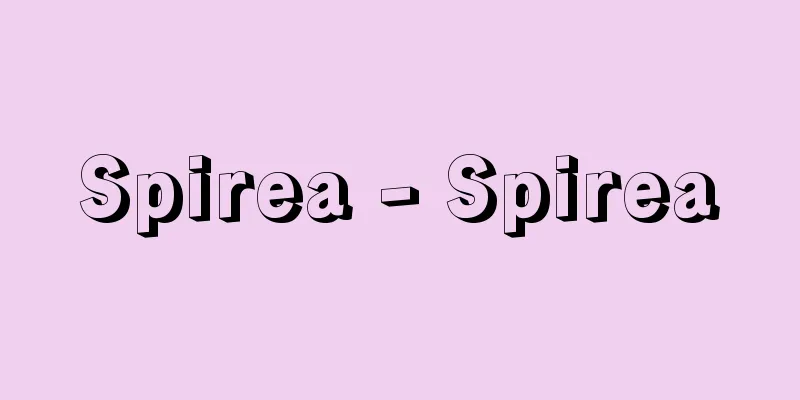Particle size distribution - Ryudobunpu

|
The ratio of particles belonging to a certain particle size range to the total amount. There are three ways to express the particle size distribution of powders: Source: Morikita Publishing "Chemical Dictionary (2nd Edition)" Information about the Chemical Dictionary 2nd Edition |
|
ある粒子径範囲に属する粒子の全体量に対する割合.粉体の粒度分布の表示法としては次の三通りがある. 出典 森北出版「化学辞典(第2版)」化学辞典 第2版について 情報 |
Recommend
Economic Journal
A world-renowned academic journal on economics. It...
Tamiji Kitagawa - Kitagawa Tamiji
Western-style painter. Born in Shizuoka Prefectur...
Echigo
In ancient times, this place name referred to the ...
Brass band - Suisougaku
Literally, it means music played by wind instrume...
dies solis (English spelling) diessolis
...In particular, Mithraism was a strong enemy of...
Nitten Exhibition
A comprehensive art organization. An abbreviation...
Picatrix (English spelling)
One of the most representative magical books of me...
Kibitsu
...There are no definite records of eruptions in ...
Bamboo xylophone
〘 noun 〙 One of the three-stringed harps. Also the...
Eye spot
Also called eye-like patterns. They also seem to r...
Eustathios Macremborite - Eustathios Macremborite
…refers to literature written in Greek in the Byz...
Events - Events
〘Noun〙 Buddhist term. ① The title of a job that ha...
Homeostasis
This refers to the ability of an organism or a li...
Western Samoa (English spelling)
…Official name: Independent State of SamoaArea: 2...
Sabotage - Sabotage (English spelling) French
One of the means of labor disputes. It is usually...
![Osafune [town] - Osafune](/upload/images/67cb1cced2b78.webp)








